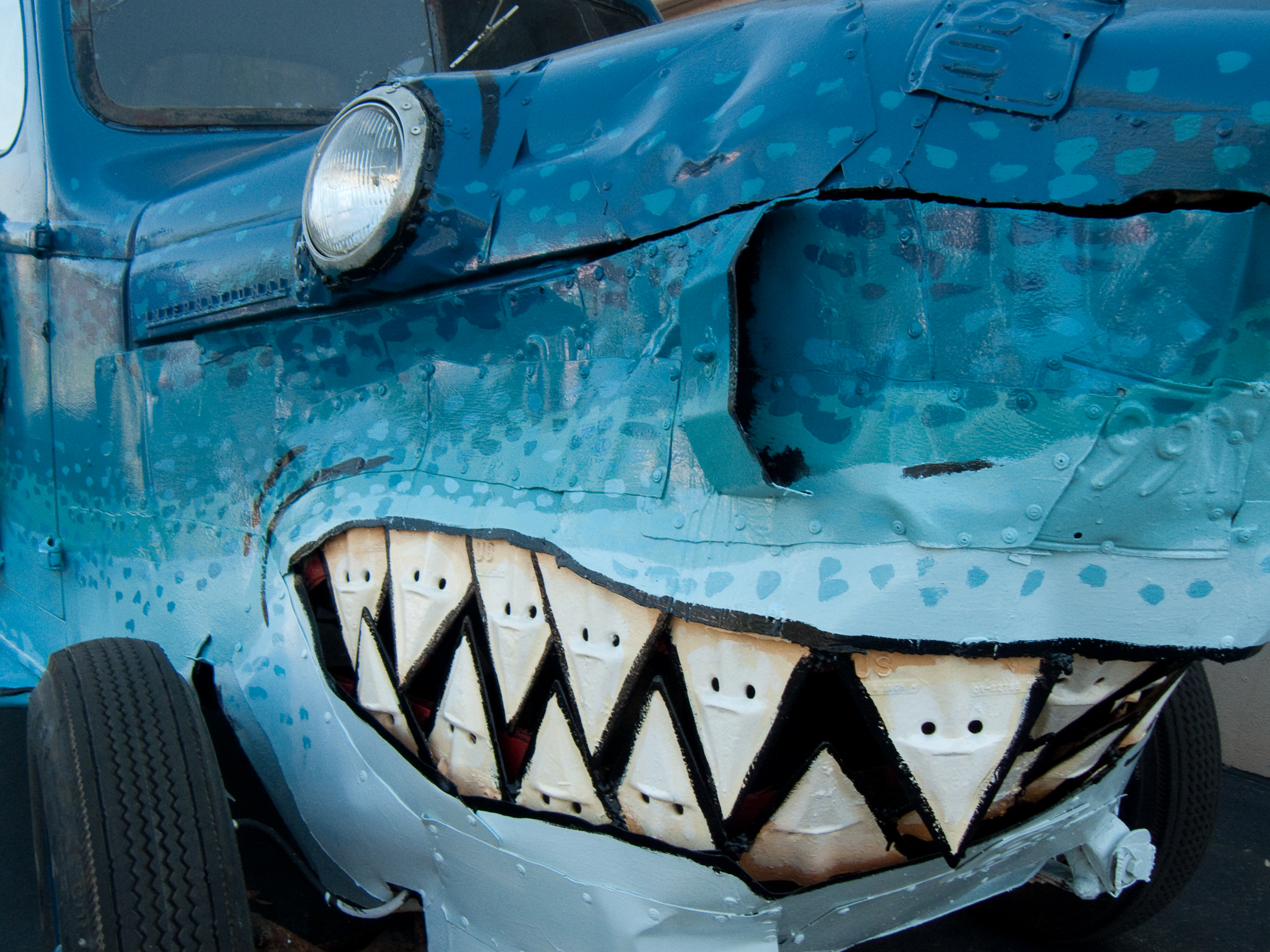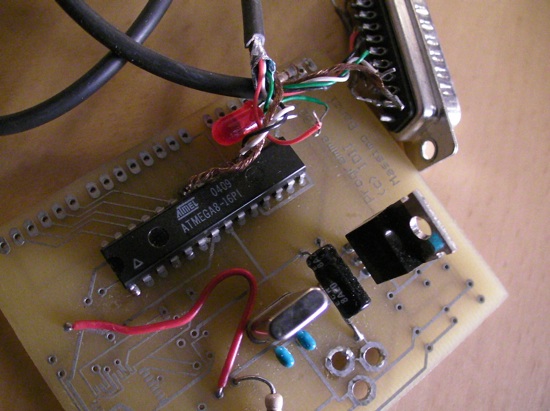|
London Hackspace
London Hackspace (abbreviated LHS) is a non–profit hackerspace in London, UK, established in 2009. Originally located in Islington, it moved to Hoxton in July 2010, and later to Wembley. In 2012, it was the largest hackerspace in the United Kingdom by membership, with over 1000 paying members. Founding The group held its first meeting at Ye Olde Cheshire Cheese on 10 February 2009. Organisational status London Hackspace became the world's first virtualised non–profit corporation on 27 July 2011, when the members at the AGM voted to use the OneClickOrgs platform to carry out all the procedures of the board of directors. Facilities London hackspace has a wide variety of facilities split across two floors and a large car park, including equipment for electronics, 3D printing, craft, laser cutting, woodwork, metalwork, biology, amateur radio, robotics, and many other things. An incomplete list of equipment can be founon their wiki Projects * At Maker Faire 2011, me ... [...More Info...] [...Related Items...] OR: [Wikipedia] [Google] [Baidu] |
Governmental Organization
A government agency or state agency, sometimes an appointed commission, is a permanent or semi-permanent organization in the machinery of government (bureaucracy) that is responsible for the oversight and administration of specific functions, such as an Administration (government), administration. There is a notable variety of agency types. Although usage differs, a government agency is normally distinct both from a department or Ministry (government department), ministry, and other types of public body established by government. The functions of an agency are normally executive in character since different types of organizations (''such as commissions'') are most often constituted in an advisory role — this distinction is often blurred in practice however, it is not allowed. A government agency may be established by either a national government or a state government within a federal system. Agencies can be established by legislation or by executive powers. The autonomy, indep ... [...More Info...] [...Related Items...] OR: [Wikipedia] [Google] [Baidu] |
Maker Faire
Maker Faire is a convention of do it yourself (DIY) enthusiasts established by '' Make'' magazine in 2006. Participants come from a wide variety of interests, such as robotics, 3D printing, computers, arts and crafts, and hacker culture. History In 2005, Dale Dougherty founded the magazine ''Make:'' as a quarterly publication with Tim O’Reilly. The first Make: magazine was published in 2005 and the first Maker Faire took place in 2006 in San Mateo. Over the next 13 years, this inaugural maker faire expanded to more than 200 licensed Maker Faires in more than 40 countries. Dale Dougherty convened the first Maker Faire in 2006 in San Mateo, California, drawing a crowd of 20,000. Maker Media Inc. went out of business in June 2019, and Dale Dougherty rebranded as Make Community. Maker Faires in the US Flagship Maker Faires The Flagship Maker Faire (Bay Area) was held in San Mateo, California and a second is in New York City. The last Bay Area Maker Faire was held in 2019. ... [...More Info...] [...Related Items...] OR: [Wikipedia] [Google] [Baidu] |
Hackerspaces
A hackerspace (also referred to as a hacklab, hackspace, or makerspace) is a community-operated, often "not for profit" (501(c)(3) organization, 501(c)(3) in the United States), workspace where people with common interests, such as computers, machining, technology, science, digital art, or electronic art, can meeting, meet, Socialization, socialize, and Collaboration, collaborate. Hackerspaces are comparable to other community-operated spaces with similar aims and mechanisms such as Fab Lab (fabrication laboratory), Fab Lab, men's sheds, and commercial "for-profit" companies. History In 2006 Paul Böhm came up with a fundraising strategy based on the Street Performer Protocol to build Metalab in Vienna, Austria, and became its founding director. In 2007 he and others started Hackerspaces.org, a wiki-based website that maintains a list of many hackerspaces and documents patterns on how to start and run them. , the community list included 1967 hackerspaces with 1199 active sites a ... [...More Info...] [...Related Items...] OR: [Wikipedia] [Google] [Baidu] |
OpenStreetMap
OpenStreetMap (abbreviated OSM) is a free, Open Database License, open geographic database, map database updated and maintained by a community of volunteers via open collaboration. Contributors collect data from surveying, surveys, trace from Aerial photography, aerial photo imagery or satellite imagery, and import from other freely licensed geodata sources. OpenStreetMap is Free content, freely licensed under the Open Database License and is commonly used to make electronic maps, inform turn-by-turn navigation, and assist in humanitarian aid and Data and information visualization, data visualisation. OpenStreetMap uses its own data model to store geographical features which can then be exported into other GIS file formats. The OpenStreetMap website itself is an Web mapping, online map, geodata search engine, and editor. OpenStreetMap was created by Steve Coast in response to the Ordnance Survey, the United Kingdom's national mapping agency, failing to release its data to the pub ... [...More Info...] [...Related Items...] OR: [Wikipedia] [Google] [Baidu] |
Python (programming Language)
Python is a high-level programming language, high-level, general-purpose programming language. Its design philosophy emphasizes code readability with the use of significant indentation. Python is type system#DYNAMIC, dynamically type-checked and garbage collection (computer science), garbage-collected. It supports multiple programming paradigms, including structured programming, structured (particularly procedural programming, procedural), object-oriented and functional programming. It is often described as a "batteries included" language due to its comprehensive standard library. Guido van Rossum began working on Python in the late 1980s as a successor to the ABC (programming language), ABC programming language, and he first released it in 1991 as Python 0.9.0. Python 2.0 was released in 2000. Python 3.0, released in 2008, was a major revision not completely backward-compatible with earlier versions. Python 2.7.18, released in 2020, was the last release of ... [...More Info...] [...Related Items...] OR: [Wikipedia] [Google] [Baidu] |
Arduino
Arduino () is an Italian open-source hardware and open-source software, software company, project, and user community that designs and manufactures single-board microcontrollers and microcontroller kits for building digital devices. Its hardware products are licensed under a Creative Commons license, CC BY-SA license, while the software is licensed under the GNU Lesser General Public License (LGPL) or the GNU General Public License (GPL), permitting the manufacture of Arduino boards and software distribution by anyone. Arduino boards are available commercially from the official website or through authorized distributors. Arduino board designs use a variety of microprocessors and controllers. The boards are equipped with sets of digital and analog input/output (I/O) pins that may be interfaced to various expansion boards ('shields') or breadboards (for prototyping) and other circuits. The boards feature serial communications interfaces, including Universal Serial Bus (USB) on som ... [...More Info...] [...Related Items...] OR: [Wikipedia] [Google] [Baidu] |
Amateur Radio
Amateur radio, also known as ham radio, is the use of the radio frequency radio spectrum, spectrum for purposes of non-commercial exchange of messages, wireless experimentation, self-training, private recreation, radiosport, contesting, and emergency, emergency communications. The term ''"radio amateur"'' is used to specify ''"a duly authorized person interested in radioelectric practice with a purely personal aim and without wikt:pecuniary, pecuniary interest"'' (either direct monetary or other similar reward); and to differentiate it from commercial broadcasting, public safety (police and fire), or two-way radio professional services (maritime, aviation, taxis, etc.). The amateur radio service (''amateur service'' and ''amateur-satellite service'') is established by the International Telecommunication Union (ITU) through their recommended radio regulations. National governments regulate technical and operational characteristics of transmissions and issue individual station li ... [...More Info...] [...Related Items...] OR: [Wikipedia] [Google] [Baidu] |
Locksport
Locksport is the sport or recreation of defeating Lock (security device), locking systems. Its enthusiasts learn a variety of skills including lock picking, lock bumping, and a variety of other skills traditionally known only to locksmithing, locksmiths and other security professionals. Locksport followers enjoy the challenge and excitement of learning to defeat all forms of locks, and often gather together in sport groups to share knowledge, exchange ideas, and participate in a variety of recreational activities and contests. History Lock picking has existed for as long as locks have, and recreational lock picking has as well. King Louis XVI of France (1754–1793) was a keen designer, picker and manipulator of locks. Notes from the MIT Roof and tunnel hacking, Roof and Tunnel Hacking community were made widely available in 1991 a''The MIT Guide to Lock Picking'' However, as an organized hobby, lock picking is a relatively recent phenomenon. The earliest known organized gro ... [...More Info...] [...Related Items...] OR: [Wikipedia] [Google] [Baidu] |
Do-it-yourself Biology
Do-it-yourself biology (DIY biology, DIY bio) is a biotechnology, biotechnological social movement in which individuals, communities, and small organizations study biology and List of life sciences, life science using the same methods as traditional research institutions. Do it yourself, DIY biology is primarily undertaken by individuals with limited research training from academia or corporations, who then mentor and oversee other DIY biologists with little or no formal training. This may be done as a hobby, as a not-for-profit endeavor for community learning and open-science innovation, or for profit, to start a business. Other terms are also associated with the do-it-yourself biology community. The terms biohacking and wetware hacking emphasize the connection to hacker culture and the hacker ethic. The term hacker is used in the original sense of finding new and clever ways to do things. The term biohacking is also used by the Grinder (biohacking community), grinder body modif ... [...More Info...] [...Related Items...] OR: [Wikipedia] [Google] [Baidu] |
Open Rights Group
The Open Rights Group (ORG) is a UK-based organisation that works to preserve digital rights and freedoms by campaigning on digital rights issues and by fostering a community of grassroots activists. It campaigns on numerous issues including mass surveillance, internet filtering and censorship, and intellectual property rights. History The organisation was started by Danny O'Brien, Cory Doctorow, , Rufus Pollock, James Cronin, Stefan Magdalinski, Louise Ferguson and Suw Charman after a panel discussion at Open Tech 2005. O'Brien created a pledge on PledgeBank, placed on 23 July 2005, with a deadline of 25 December 2005: ''"I will create a standing order of 5 pounds per month to support an organisation that will campaign for digital rights in the UK but only if 1,000 other people will too."'' The pledge reached 1000 people on 29 November 2005. The Open Rights Group was launched at a "sell-out" meeting in Soho, London. Work The group has made submissions to the All Party ... [...More Info...] [...Related Items...] OR: [Wikipedia] [Google] [Baidu] |








